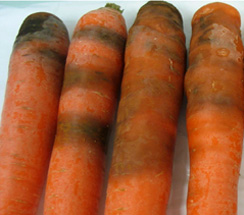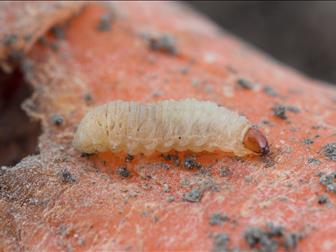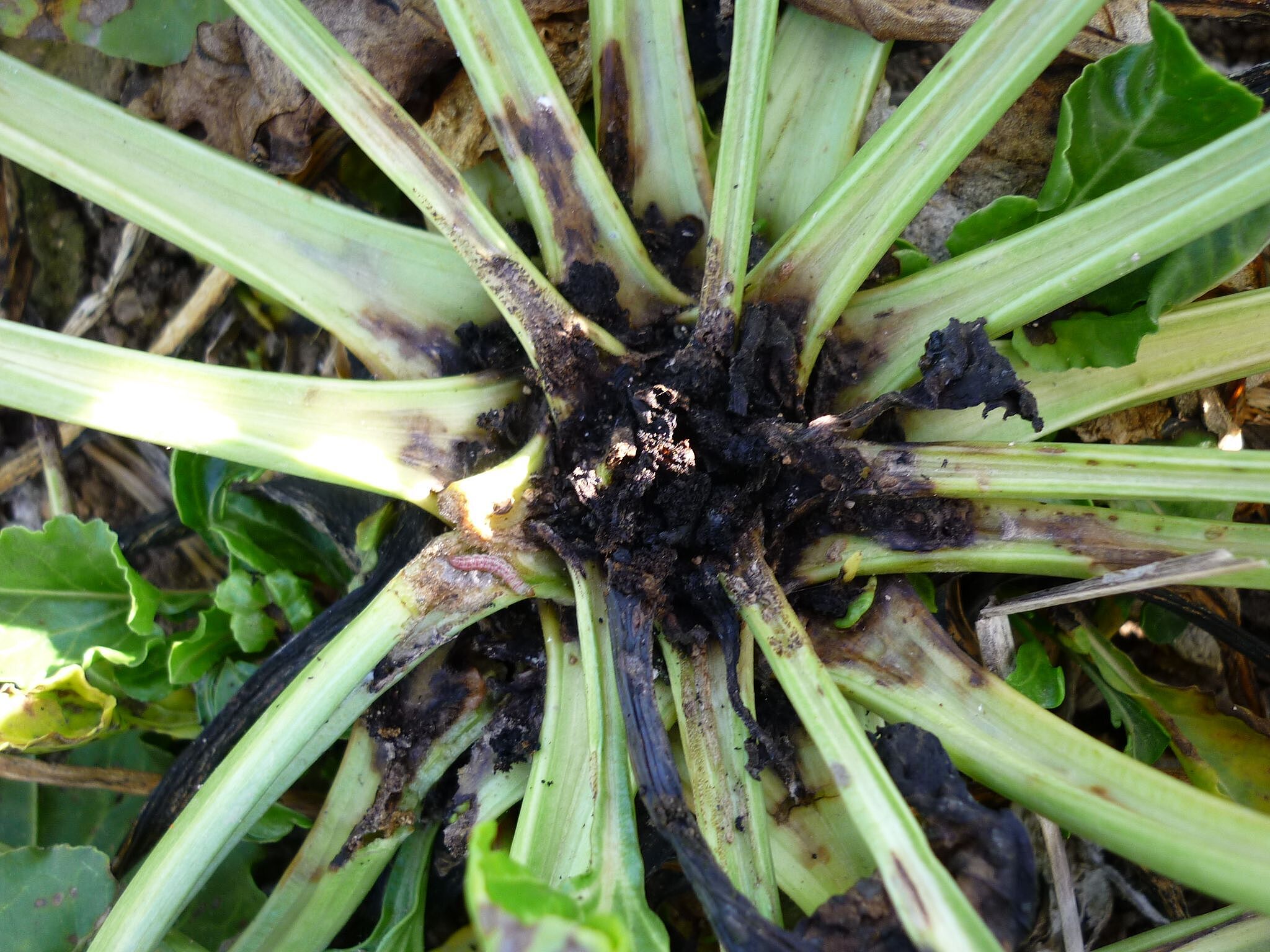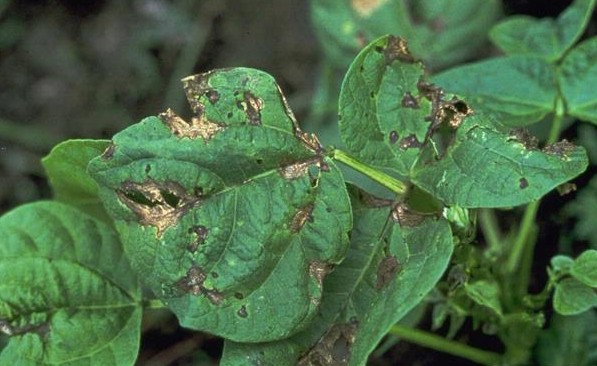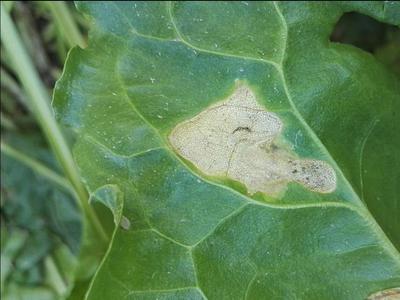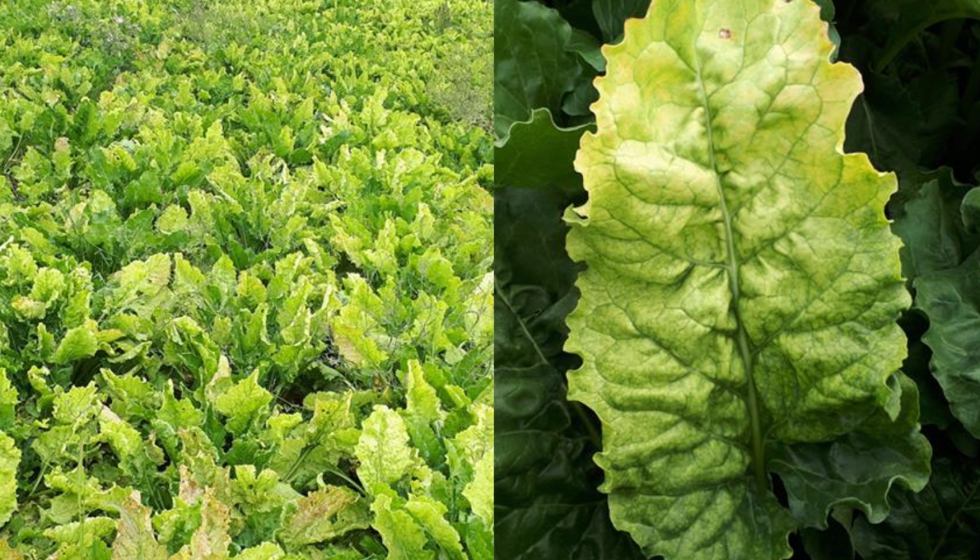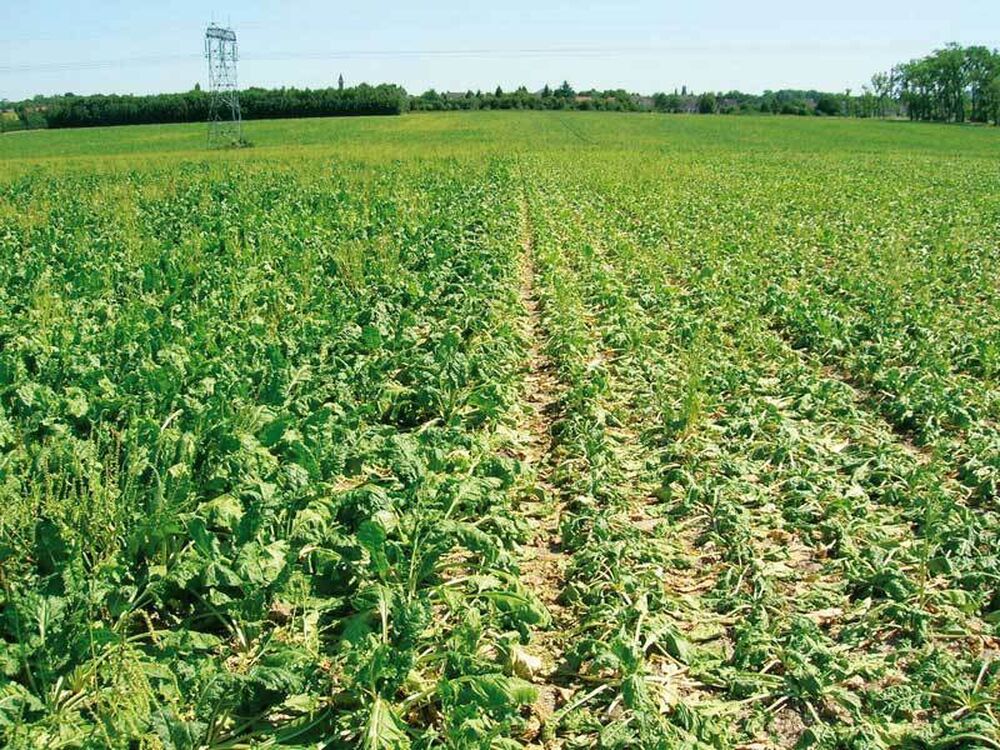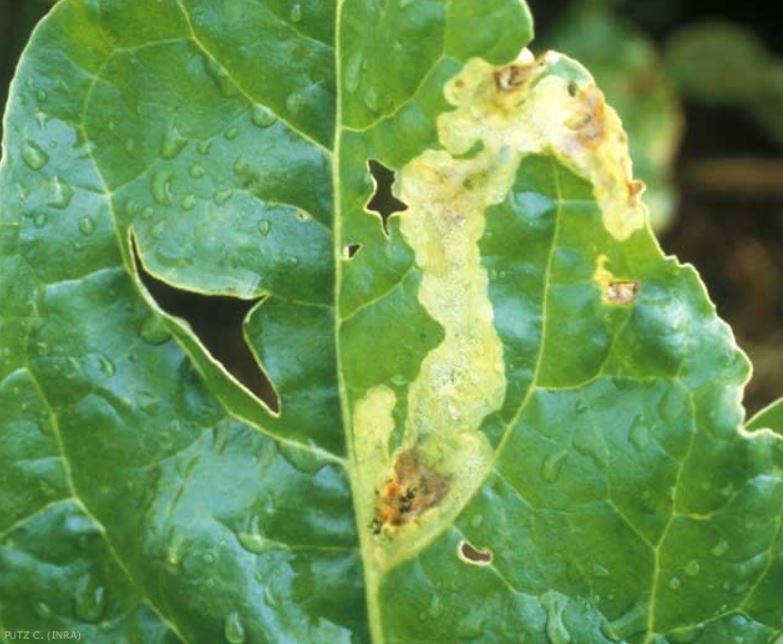
Zanahoria
How to recognize and combat gray rot in carrots
Gray Rot
Fungus
Type:
Risk to the plant:
HIGH
Botrytis Cinerea
Pathogen:
Podredumbre gris

WHO CAUSES IT?
Botrytis cinerea is a necrotrophic fungus that infects a wide range of plants, including carrots. This pathogen is known for its ability to produce conidial spores that are easily spread through air, water, and contact with contaminated materials. The spores germinate in the presence of humidity and favorable temperatures, producing mycelium that invades the plant tissues. Botrytis cinerea survives on infected plant debris and in soil, and can enter a state of dormancy during unfavorable conditions, resuming activity when conditions improve. In addition to conidial spores, the fungus can also produce sclerotia, resistant structures that allow it to survive for long periods in the soil. The infection usually begins in damaged or senescent tissues, spreading rapidly to healthy parts of the plant under conditions of high humidity and moderate temperatures.
SYMPTOMS
Gray rot caused by Botrytis cinerea significantly affects carrots, manifesting itself in various parts of the plant. The disease generally starts in the parts closest to the soil, where humidity conditions are highest, and spreads to other parts of the plant, including the roots.
- Watery and soft lesions at the base of the plant.
- Appearance of grayish mold in the affected areas.
- Discoloration and necrosis in leaves and stems.
- Roots with rotten and soft areas.
- Withering of the plant in severe cases.
- Reduction in the quality and size of the roots.


DEVELOPMENT CONDITIONS
Temperature:
15°C - 25°C
Humidity:
85% - 95%
HOW IS IT SPREAD?
Air, Irrigation water, Contact with contaminated tools, Remains of infected plants, Vector insects, Infected seeds
HOW TO ELIMINATE IT?
Home treatments
Natural allies
There are no natural allies
Chemical treatments
RECOMMENDED PRODUCTS TO ELIMINATE THE PEST
REPELLENT PLANTS
-
RECOMMENDATIONS
- Avoid wetting the leaves when watering.
- Improves ventilation around plants.
- Remove damaged or rotten flowers, leaves or fruits.
- Don't put the plants too close together.
- Apply horsetail infusion or a solution of baking soda and soap.
- Use fungicides only if the problem is serious and follow the instructions.




